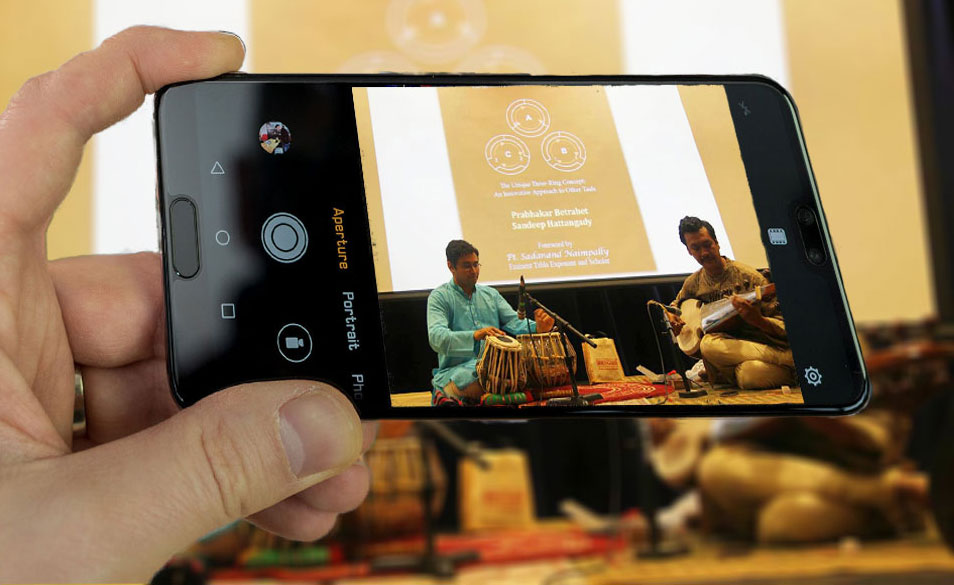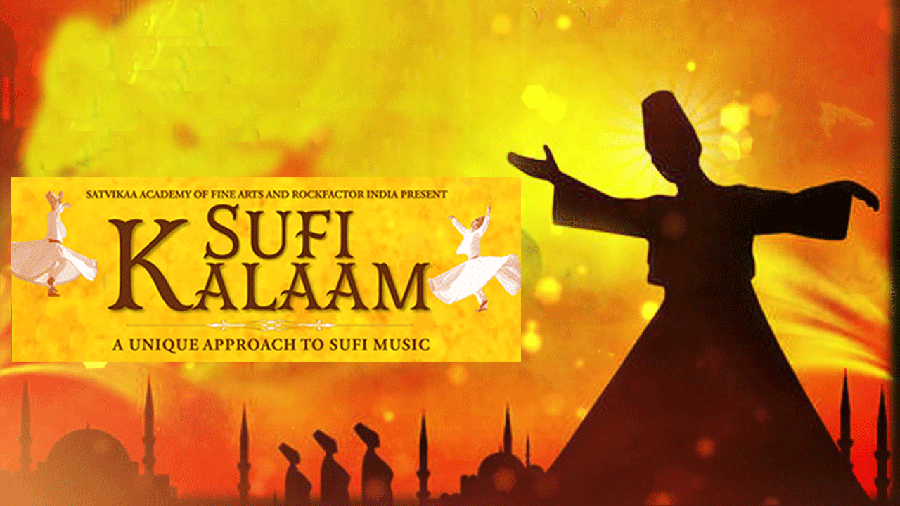On a winter morning, in a buzzing cafe, I sat down with Usha Rk, a well-known art consultant, Classical Arts presenter, Mentor who is also currently serving as the Director of JNCC, Moscow during her flying visit to Bangalore. In her typical huge round red bindi and piercing eyes, she openly talked about the performing arts scene and her experience as an organiser and presenter. Here are a few excerpts from that long conversation.
It is quite common to hear dancers cribbing about lack of exposure and opportunities. What are the things an artist can or must do to Promote himself in a healthy manner?
In today’s age, exposure is at every artist’s palmtop. The social media allows artists to promote themselves without having to depend on anyone. While there is both a positive and negative side of overexposing oneself, for me as an old school thinker with a modern approach, the priority is BASICS. It is most important to get the basics in order. Hard-work is the best promotional tool. Riyaaz, rehearsal, whatever you want to call it, is the only correct direction to embark upon as an artist.
Right now, the arts scene is most vibrant and full of opportunities. Performances happen every day, in every possible nook and corner of the country. The opportunities are definitely in abundance. As an organiser whenever I approach an artist, they say they need time to confirm because most of them have some commitment or the other all the time.
It is just not about opportunities, today the artists have the freedom to experiment and make a comment with their art. There is a sizeable audience to every art that makes a connect with the public. With all this, if the artist feels that they are not being recognised enough the only solution is to look inward. Where is the homework? Research? Thought process? One cannot randomly copy things from different places and call their art contemporary. Artists cannot just be inspired by others and venture into themes that they do not really connect to. One must wait for the calling, the subject must churn you from within and force you to meditate, study and immerse yourself in it. After this exhaustive process, when you work in a way that the “process” is more important than the “product” you win any which way. Irrespective of the success of the show, you have grown and your artistic journey has evolved. That is more important.
Every great artist has always gone through a lot of internal contemplation. They have analysed their bodies, their capabilities, their mind space and their true calling. It is for this reason that they are great. If you just copy another artist, you will remain just that! A copy! No opportunity, visibility can help you. A discerning Rasika is intelligent to see which work is original and which is borrowed. Only original and meaningful content can survive and make an impact.
How Does an artist understand his calling?
It takes time. It is like a tapas. One must ponder, question and indulge with ones own art endlessly for it, to evolve. Like in advertising and marketing there is this SWOT analysis, every artist must realistically understand their own Strength, Weakness, Opportunities and Threats. Every artist must first identify their weakest points. Work on it gradually so that it will eventually turn into their strength. And with the strength that is already in one’s Kitty, one must build themselves. They must flaunt their strengths and polish it to perfection. Once the self-analysis is in order, the artist must yearn to go deep. Research must go beyond YouTube and google. An organises once introduced me as a writer of thirteen books. I was surprised by this information. Later I found out that there is another author called Usha Radhakrishna. This is the problem of spoon-fed research. You cannot trust it without the help and guidance of experts! The greatest quality of an artist lies in the quality of people they pursue. There are many young scholars and thinkers who can add value to your project, it is for you to search them, pick them and convince them to help you hone your work.
Opportunities come only once, if you waste it away in procrastination, nobody can help you. An artist must learn to shine in every smallest opportunity.
How to deal with homogeneity in performance arts? How can one not end up being a copy or clone of a star?
If you look at the artists who made a mark like Birju Maharaj, Dr Sonal Mansingh, The Dhananjayans, Padma Subrahmanyam, Chitra Vishweswaran, Sudharani Raghupaty, Vaijayanti Mala etc all were very individualistic. They had their own characteristic stamp. It is obvious to be inspired by an artist. Initially, it all begins with some kind of inspiration only. Anyways till the age of forty most dancers only focus on their physicality. The focus on perfect tatti mettus, aramandi, the jumps and angashuddhi take away all your time. It is obvious that at that age dancers want to copy the mannerisms of a star. Earlier dancers copied Malavika Sarukkai and the current generation want to copy Rama Vaidyanathan. It is okay. When an artist touched 38 or so they must put their foot on the break and watch themselves. What is it that they have to offer? What suits them and their bodies? They must watch the mirror critically and understand if they are just clones? If the mannerisms are making them look funny? Every audience obviously knows where that mannerism has come from, so what does it say about your individual voice? Only after forty that the real journey of the Satwika begins. At this point, if an artist does not carve a niche for themselves, they are doomed. There has to be a unique quality to one’s art for it to stand out and be remembered. Authenticity is the keyword.
[adrotate group=”9″]
M S Subbulakshmi amma once told me that singing the notation can’t be music. What an artist can pour into this notation, the inner journey that shines between the lines is the art. If not, it is just technical. Manodharma is at the heart of all Indian art. Manodharma, is following the Dharma of the mind. For the mind to guide you, you must hone and let the mind cook under the fire of introspection.
The shows conceptualised by you have been very successful and very well received. What is the modus operandi of your conceptualisation, a compilation that connects instantly with the audience?
In 2006 when I returned to Bangalore after a decade long break, I was yearning to do something. I was sure It had to stand out and not be the regular Sabha performance. I first took the time to watch what was happening. I observed that all the sabhas had more or less the same things being featured by different artists. The artists were doing whatever they thought was best for them and presented it. I saw an opportunity here. I had the gift of emotional distance. I could see the artists scope to shine better than the artists themselves because I saw their work with detachment and could easily graph out their capabilities very clearly. Usually what the artists thought was good enough, didn’t seem good enough for me. What they thought were their strengths, didn’t seem like strength for me. I could notice that many performers were ignoring their own potential and working on something that was not their cup of tea.
The market was flooded and I had to find a niche, a tributary space where I could flourish as a presenter. It is at that time that I designed the show of Bhadrachala Ramadasa Kritis to be presented by six male dancers. It was the bringing together of different energies, different bodies and minds. I tailor picked a different Kriti for each artist as per their strengths. I visualised the artists performing each Kriti with a story and could clearly see who could shine where. I made sure since young dancers were also dancing with accomplished dancers that there would be no weak link anywhere. I was using the optimal artistic values of every artist and arranging them into a beautiful necklace.
Again I am reminded that MS AMMA had once told me that while singing a raaga it should be like a necklace. Only diamonds or only rubies makes the necklace ordinary but if they are interspersed in a pattern they look gorgeous. It’s about conceptualising a presentation where individual strengths shine in flashes and the audience also get the time and space to breathe and take in the art. I made a composite presentation with 8 different “aha” moments for the audiences to take back home. That formula really worked.
[adrotate group=”9″]
You have worked with different artists and have always told me how senior artists more open to feedback whilst some young dancers remain headstrong?
Seniority doesn’t matter. An honest feedback is a mirror. One must see what the mirror shows and not at the hallucinated reflection they want to see. Honest feedback comes from a right place. It is shared with you so that you can open up new doors to understanding the art. If you do not want the well-intentioned feedback and want to remain in your own well nobody can help you. How people react to feedback, also depends on how they have been brought up and taught. If the parent or guru has been over pampering, the student will always grow up thinking they are stars and are indispensable. When honest feedback punctures your imaginary ballon the artists are often driven Into a defensive shell from which they never recover. An open mind and heart always elevate your art to great heights.
I have seen artists grow tremendously with feedback. An example I can proudly quote is Mithun Shyam. When I worked with him for the first time, in him I saw a student always willing to evolve. I asked him to collaborate with gurus from different styles. He sweated it out and worked really hard and emerged as a shining star.
Maybe the social media presence and stardom has pushed some youngsters into their own imaginative superiority bubbles from there they do not want to listen to any advice or well-intentioned criticism. The “ I Know it all” attitude can only hamper their growth and take them to their doom. Humility, willingness to be corrected is the greatest virtue of every artist. The fabric of visibility might have changed but youngsters must understand that long-standing work and creating iconic presentations are a different ball game. They need to get out of their egoistic shells and burn it out in the REAL world.
If I can just rake up something from the recent past. There was this huge hullabaloo over your strong opinion about dancers putting up practice videos in casual outfits?
I just want to say that these dancers must understand that they have to look beyond just being “dancers.” They are artists. The word art carries with it a certain aesthetic and value that they must respect. BE A ROMAN WHEN IN ROME. Don’t wear a practice costume to a night party or swimming pool. Similarly don’t practice in a swimming costume or a party outfit. If you cannot go to the gym with a dhoti or saree, why should you dance in a tracksuit or gym apparel? It is just simple common sense. It has got nothing to do with morality. I find girls dressed in mini skirts, make up, carrying it with confidence in a party extremely beautiful. Similarly, I find a dancer in dhoti or practice costume extremely aesthetic and beautiful. As an elder person I can only share my wisdom and life experiences with the young artists and if they don’t want to take it, so be it! I can only wish them the best. You cannot deny that ahaarya adds so much to the mindset of the artist. It is also part of getting into the charter of the Artist and practice is where the seeds sprout. A practice space has to be conducive to aesthetic thinking and growth.
When can dancers call themselves “Professional”?
A literal meaning would be that somebody earning from this art is called a professional. The ethos and connotations of this, however, changes in this context. Like only after a long haul an entrepreneur gets to be recognised as an entrepreneur or an employee climbs up the ladder to be a GM of a company. A dancer can only consider themselves professional after proving their place and staying put for a long time. They need to stay relevant and their work must matter for people to accept them as professional dancers. If you are a full-time dancer who has just begun performing, you are still just like an intern. To identify yourself as a professional, you must have the expertise and experience.
[adrotate group=”9″]
One cannot compromise on the training and hope to jump to the top of the ladder. No matter how exceptionally talented one is, no matter if one is a prodigy or a wizard, training and graduating over a period of time is a must. The classical art forms take time, life experiences add to the art, the inherited experiences from the mentors add to the art and only with these long-tested additions can art achieve superlative status. It is not enough to be popular, It is important to create a substantial body of work that can be looked back upon as transformative, innovative and even sometimes transcendental. It is important to leave footprints so deep that its imprints become un-erasable! For all that this; there was, is and never will be a shortcut.
Lastly, your words of advice for an aspiring artist who wishes to make a mark on the arts field?
Don’t hurry. Have patience and take time. Be ready for every opportunity that comes your way and do not waste any opportunity that has landed at your doorstep. Observe the great artists. See how stalwarts like Sonal Mansingh, Padma Subrahmanyam etc still work with passion throughout. Learn to indulge, soak and immerse yourself in every performance. Speak to seniors and imbibe the information they are willing to share. Eat, drink and sleep dance. Read and research. Even an iconic person like Sonal Mansingh still works day and night for every performance. There is so less time and so much more to learn she says! That’s the way to go. That is the passion that will walk you towards a meaningful adventure.
I know there is a lot of talent out there. There is a lot of hope too. I just wish the youngsters have a more meaningful, fulfilling and successful artistic journey.
Thank you so much Usha Ji.
 Karthik Hebbar is one of the leading dance musicians and composers from Bangalore. He is also theatre Director, actor, photographer and a writer. He contributes reviews and scholarly articles regularly to many reputed publications.
Karthik Hebbar is one of the leading dance musicians and composers from Bangalore. He is also theatre Director, actor, photographer and a writer. He contributes reviews and scholarly articles regularly to many reputed publications.
Email: rkarthikhebbar@gmail.com










